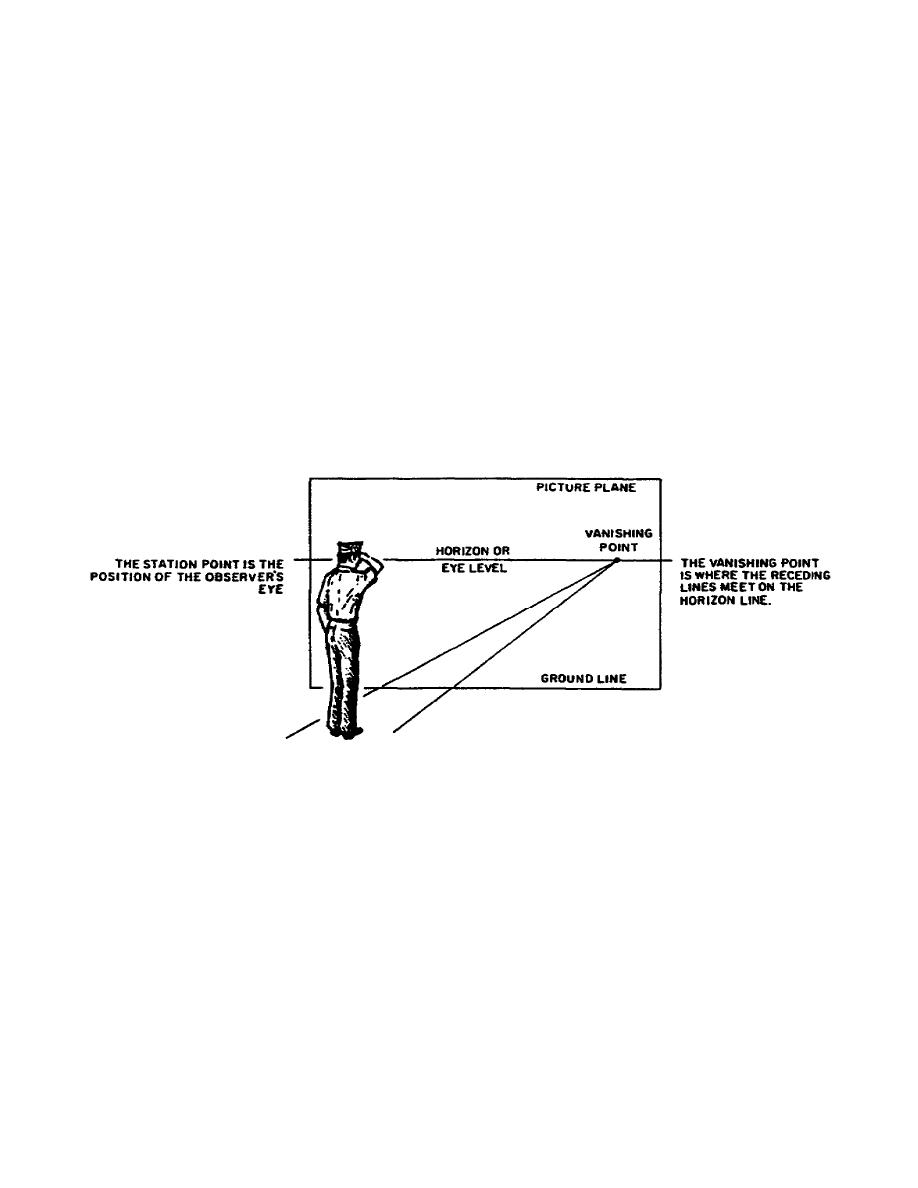
an observer on the ground or street level than it would to the same observer
on the fourth floor of a large building.
5. Perspective drawing is based on the fact that all lines extending from
the observer appear to converge or come together at some distant point. For
example, to a person sighting down a long stretch of railroad tracks, the
tracks will appear to merge or vanish at a single point in the distance. In
perspective projection, the point at which these parallel horizontal lines
seem to meet is known as the "vanishing point." Like the railroad tracks,
all horizontal and vertical lines and planes, except for those parallel to
the picture plane, appear to vanish or merge at the vanishing points which
are located on the horizon line (fig 1-1).
6. Think of the object to be drawn as resting on a horizontal ground plane
which is perpendicular to the "picture plane."
The limits of the "ground
plane" may be indicated on the picture plane as two separate lines: the
ground line and the horizon line. The ground line intersects the picture
plane at the bottom, and defines the lower limit of your drawing.
The
position of the horizon, or eye level line, which may or may not be visible
on the picture plane, depends upon your angle of sight.
Figure 1-1.
Perspective nomenclature
2



 Previous Page
Previous Page
